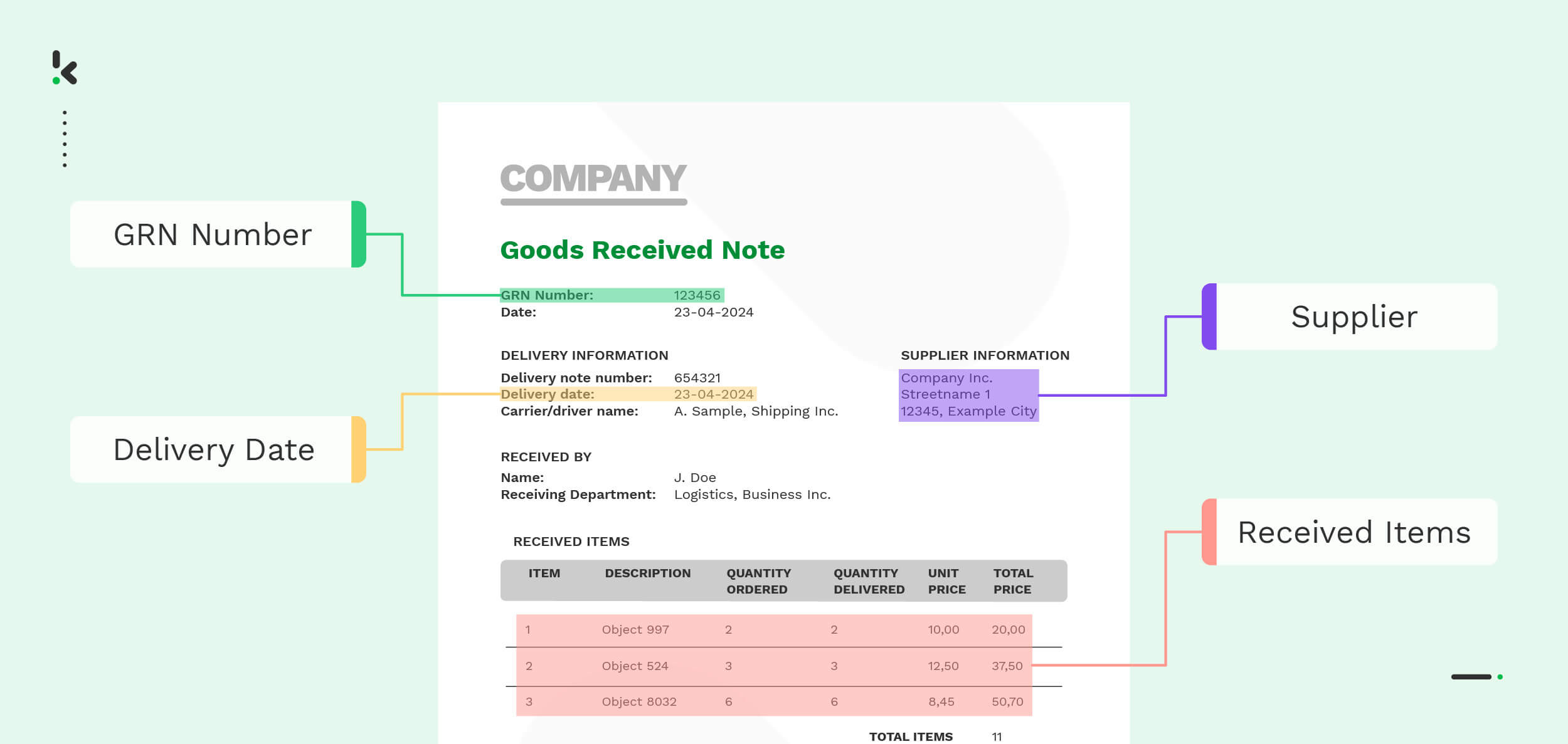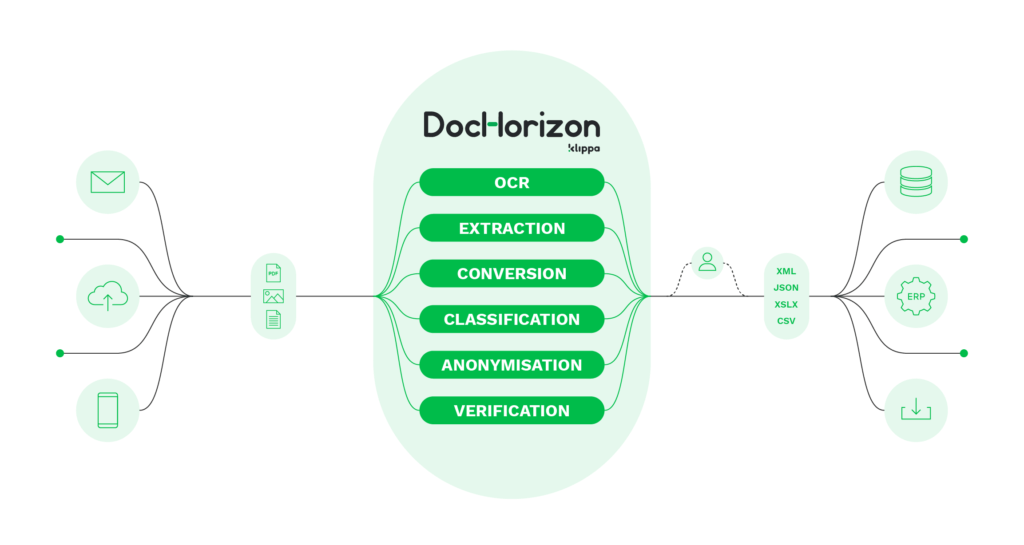

If procurement is an important part of your business, then you’re no stranger to the struggles of ensuring a smooth goods flow. It’s frustrating when your delivery arrives with missing items, damaged goods, or later than the target date, isn’t it?
Sadly, dispatch notes offer no protection for these issues. And if you can’t prove you didn’t cause them, you can end up in serious legal trouble, costing you a fortune. The good news is you can easily avoid these conundrums using a goods received note (GRN), also known as a goods receipt note (GRN).
Do you want to simplify your procurement process, remain compliant with regulations, and save costs in the long run? Then read on to learn more about how GRNs can help you achieve all that and more.
What Is a Goods Received Note?
A Goods Received Note (GRN) is a business document that provides official proof of delivery from the supplier to the buyer. It helps the buyer compare the goods received with the ones specified in the delivery note to check for discrepancies.
GRNs are frequently used in manufacturing, retail, healthcare, and logistics industries to formalize the acceptance of goods received from the supplier.
What Details Must Be Included in the Goods Receipt Note?
To simplify the goods inflow process, GRNs typically contain the following information:
- Supplier Information: The name, address, and contact details of the supplier from whom the goods were received.
- Description of Goods: A detailed description of the goods received, including item names, specifications, part numbers (if applicable), and any other relevant details.
- Delivery Details: Information such as the date and any reference numbers associated with the delivery.
- Quantity: The amount of each item received from the supplier.
- Condition of Goods: Any notes regarding the condition of the goods received, including any damages, defects, or discrepancies observed during an inspection.
- Name and Signature: The name and signature of the authorized personnel within the customer’s organization to confirm the receipt of goods.
Having outlined the information necessary for GRNs, let’s look at the reasons for using them in your procurement process.
Why Do You Need to Use Goods Received Notes?
The purpose of a goods receipt note goes beyond confirming the delivery of goods: it empowers your organization to keep a record of your procurement process to make better, more informed decisions.
Here are some of the advantages that come with GRNs:
Accuracy in Inventory Management
After ordering goods from your supplier, how do you ensure the accuracy of your inventory records? This is how GRNs can help you: they serve as your shield against incorrect or incomplete deliveries.
By carefully recording every item received from the supplier, a goods note allows you to verify that you’re getting exactly what you ordered. This helps you avoid the frustration and inconvenience of having to deal with missing or incorrect items later on.
Facilitating Dispute Resolution
Let’s say your order arrived in bad condition or not on time. How would you dispute these delivery discrepancies with your suppliers?
By maintaining comprehensive records of goods received, including dates, quantities, and conditions, GRNs provide indisputable proof of the facts. This strengthens your position when negotiating with suppliers and helps you resolve disputes faster.
Validation of Supplier Invoices
GRNs enable two-way matching with supplier invoices, allowing you to verify that you’re only paying for the goods received.
By comparing GRNs with invoices, you can detect errors, fraud, or discrepancies in pricing or quantities. This helps you prevent overpayments and inaccuracies in financial records.
Compliance and Risk Management
By documenting goods received, GRNs help you demonstrate compliance with regulations like the Public Procurement Act. They provide a transparent audit trail of goods received, which helps you facilitate internal audits or regulatory inspections.
As such, it’s essential to minimize risks as much as possible, and with GRNs, you can easily demonstrate accountability and remain compliant.
Now that you understand the reasons for using GRNs, let’s look at the document processing challenges that come with this document. This way, you can deal with them right away.
What Are the Challenges in Processing Goods Received Notes?
Like most procurement processes, handling GRNs doesn’t always go smoothly. Usually, you have no choice but to deal with issues as they arise.
Since most GRNs are processed manually, several challenges can come your way, which you should anticipate.
Let’s look at some of the most common problems you should consider when manually processing GRNs.
Slow Processing Time
It would be incredibly time-consuming for you to check each goods receipt note manually. It also becomes easy to make mistakes when inputting data or to overlook potentially fraudulent documents when reviewing them.
After the data entry process, you must also sort your GRNs and store them in a safe place. This process can become tedious and burdensome depending on the amount of documents you process.
Manual Approval
Before making all necessary payments, your personnel must manually approve the goods receipt note. This involves obtaining signatures, approvals, or making any modifications before the final payment, which introduces bottlenecks and delays in your document processing.
Therefore, inconsistent approval workflows, long processing times, and delays in getting approvals can increase overhead costs. This can cost you important sales deals, decreasing your customer satisfaction in the process.
Verification and Reconciliation
After receiving the goods, your finance department must manually verify the goods note against relevant documents. Depending on the amount of GRNs, it can take your team a long time to check every field and reconcile it with relevant documents.
Moreover, the verification and reconciliation process can become increasingly complicated based on the varying formats, terminology, or item descriptions. This process is not only tedious and prone to errors, it can also result in long delays or legal consequences.
Compliance and Audit Trail
In processing goods received notes, you are responsible for safely handling sensitive information and ensuring a complete record of goods received. Unfortunately, it’s difficult to detect fraud or prevent mistakes in data entries, which can lead to regulatory violations and legal fines.
As such, manual goods note processes may lack robust audit trails, making it challenging for your company to demonstrate compliance during audits or inspections. Thus, ensuring your company complies with procurement policies and regulatory requirements is vital.
Ready to tackle these challenges while minimizing costs and staying compliant with regulations? Read on to learn how to incorporate an automated GRN solution into your procurement process!
How to Easily Manage Goods Received Notes with Klippa


Manually processing GRNs is slowly fading as new automation technologies are taking over the tedious tasks. With an intelligent document processing (IDP) platform like Klippa DocHorizon, you can simplify your goods receipt note processing by automating manual tasks.
Here’s what DocHorizon can do for you:
- Data extraction: Have your GRN data ready for integration and analysis by automatically extracting any fields you want using AI-powered optical character recognition (OCR).
- Fraud detection: Prevent making unnecessary payments by stopping fraud in its tracks using duplicate detection and metadata analysis.
- Document verification: Save time by cross-checking information from GRNs and financial documents like invoices or POs using two-way or three-way matching.
- Data anonymization capabilities: Easily comply with regulations like GDPR by masking sensitive data like names and addresses before sending them to databases.
- Seamless integration: Get your data into any business software for further analysis by converting it to structured formats like CSV, XLSX, or XML.
- Human-in-the-loop: Achieve up to 100% data accuracy by adding a human-in-the-loop in your document verification process.
Ready to start automating your GRN processes and reduce turnaround time by up to 90% while complying with regulations? Then book a free demo below or contact our experts for more information.